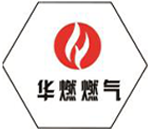
Nov . 19, 2024 07:25
Back to list
Natural Gas Pressure Control Station for Safe Distribution and Efficiency Optimization
Natural Gas Pressure Reducing Station An Overview
Natural gas is a vital energy resource used globally for heating, electricity generation, and as an industrial fuel. However, it is typically transported through pipelines at high pressures to ensure efficient movement over long distances. Before the gas can be utilized in homes or industries, it must be reduced to a safe and usable pressure. This is where the natural gas pressure reducing station (PRD) comes into play.
A natural gas pressure reducing station is an essential facility designed to lower the high pressure of gas coming from transmission pipelines. These stations play a crucial role in the distribution of natural gas, ensuring that it reaches consumers at the appropriate pressure levels for safe usage. The reduction process not only makes the gas safe for use but also helps maintain a consistent supply pressure, which is vital for gas appliances to operate efficiently.
Pressure reducing stations typically consist of key components, including pressure regulators, safety valves, filters, and sometimes metering equipment. The primary function of a pressure regulator is to reduce the incoming high pressure of natural gas to a predetermined lower pressure suitable for domestic or commercial use. Safety valves are critical for preventing overpressure scenarios that could lead to hazardous situations.
natural gas pressure reducing station

Filtering systems are also part of the station, designed to remove impurities and contaminants from the gas. Ensuring a clean supply of natural gas is essential, as particles can cause wear and tear on appliances, leading to costly repairs. Additionally, metering equipment is sometimes included to measure the amount of gas flowing through the system, allowing for accurate billing and monitoring of consumption.
Operational safety is a top priority at pressure reducing stations. These facilities must adhere to strict regulations and standards to prevent accidents and ensure the reliability of the gas supply. Routine maintenance and inspections are essential to guarantee that the equipment is functioning correctly and that safety features are operational.
In conclusion, natural gas pressure reducing stations are critical components of the natural gas distribution network. By safely lowering the pressure of transported gas, they ensure that consumers have access to a reliable and efficient energy source. As the demand for natural gas continues to rise, the importance of these stations in ensuring safety, reliability, and performance can only be expected to grow. Continuous advancements in technology and regulatory frameworks will further enhance the efficiency and safety of natural gas pressure reducing stations, securing their pivotal role in the energy sector.
Next:
Latest news
-
Safety Valve Spring-Loaded Design Overpressure ProtectionNewsJul.25,2025
-
Precision Voltage Regulator AC5 Accuracy Grade PerformanceNewsJul.25,2025
-
Natural Gas Pressure Regulating Skid Industrial Pipeline ApplicationsNewsJul.25,2025
-
Natural Gas Filter Stainless Steel Mesh Element DesignNewsJul.25,2025
-
Gas Pressure Regulator Valve Direct-Acting Spring-Loaded DesignNewsJul.25,2025
-
Decompression Equipment Multi-Stage Heat Exchange System DesignNewsJul.25,2025

